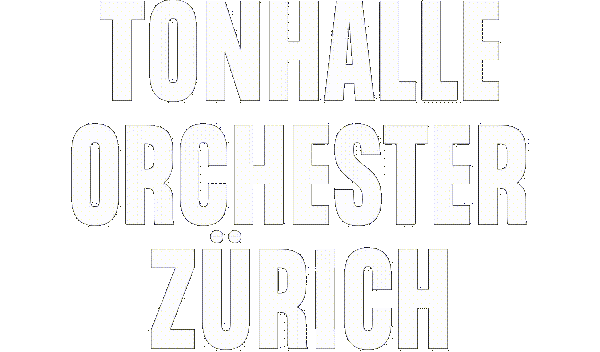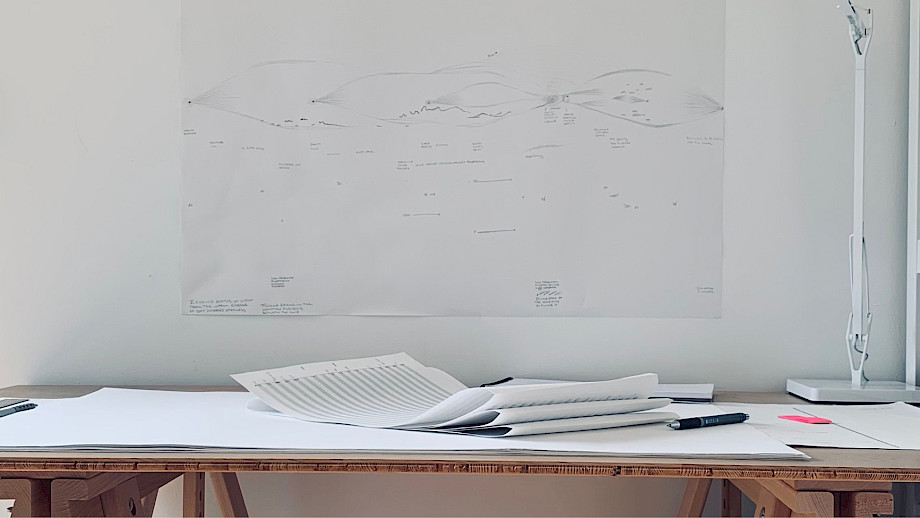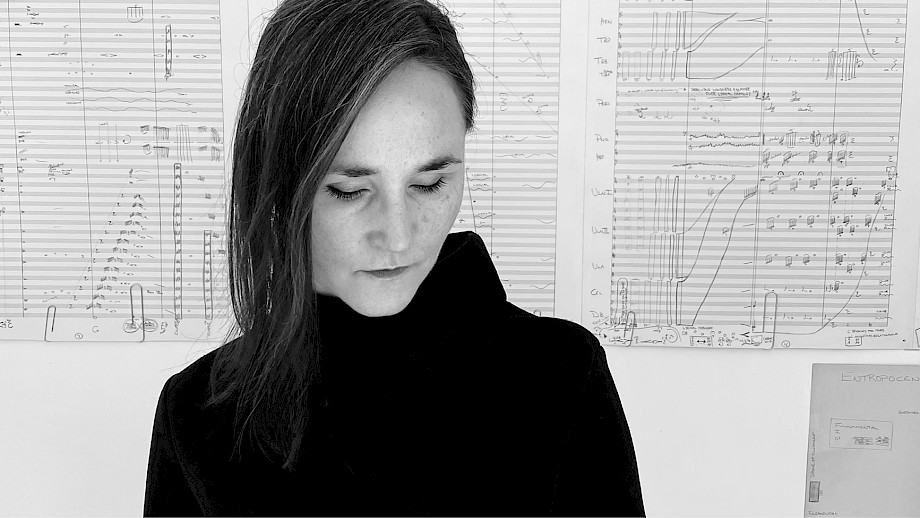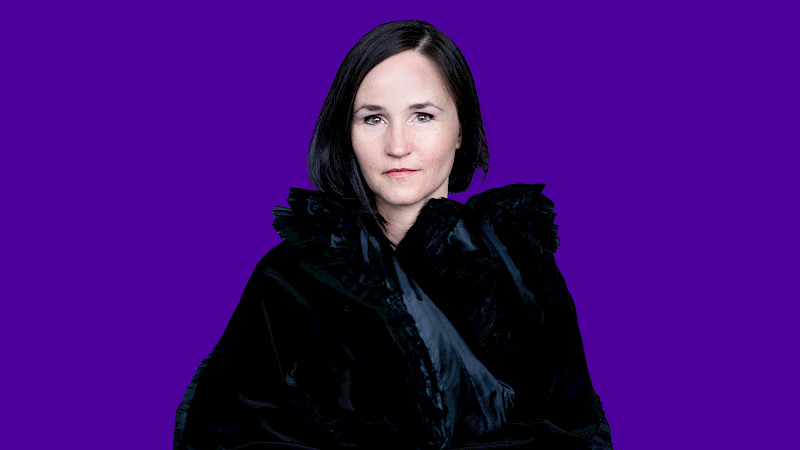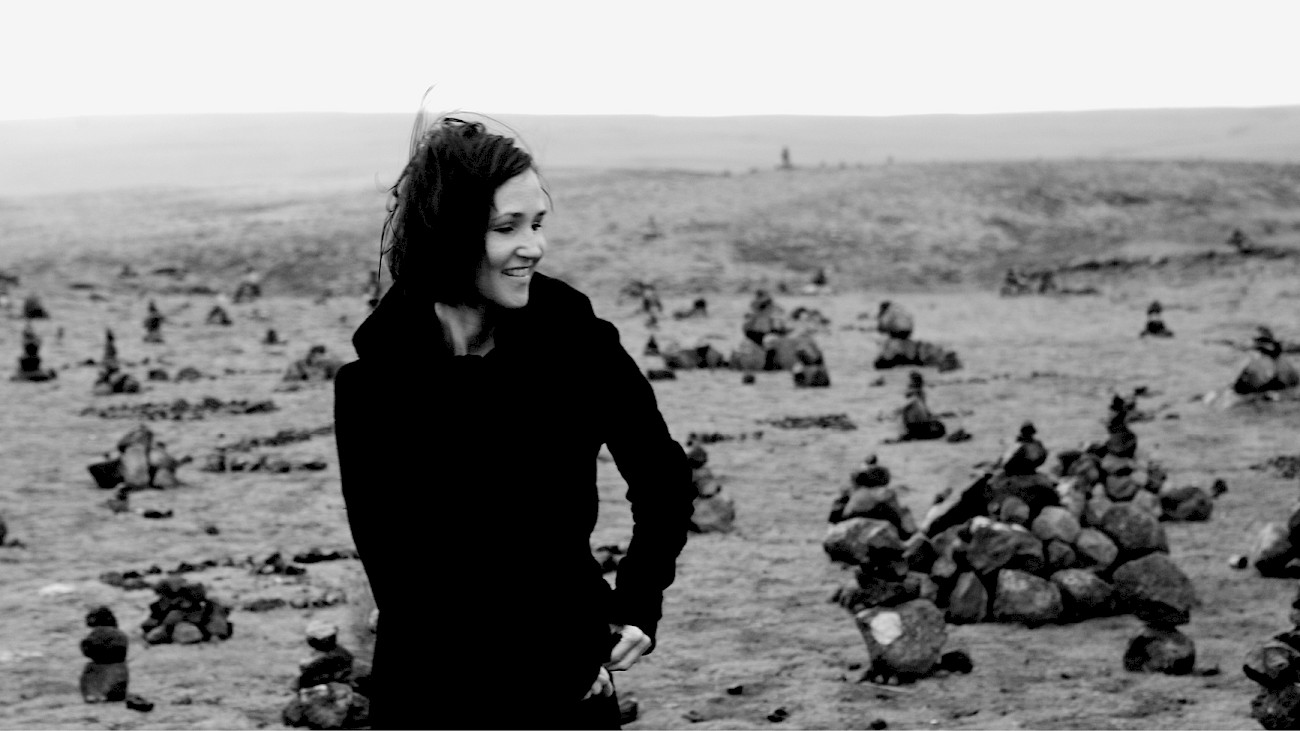
Recharge your batteries in Iceland
Her sketches show soundscapes, her finished works explore our innermost being: Anna Thorvaldsdottir's universal musical language moves people in New York, Berlin, Reykjavík and many other places. Now she is coming to Zurich as Creative Chair.
While landscapes fly by and are constantly changing, my thoughts remain clear - I like to write while travelling by train. For Anna Thorvaldsdottir, that would be unthinkable: True, as a composer she loves meeting "these amazing people" all over the world who perform her music. But travelling itself is more of a necessary evil for her - she struggles for words when asked, because she is a friendly person. And she forms her statements carefully, they should really get to the heart of what she wants to say: "I really only travel for the music. When I'm travelling, I try to take it easy and relax while I'm on the road, because I can't work on my music during that time."
Trees everywhere
She composes her music in her study in south London. It is a bright room with white walls on which she hangs her impressive sketches when approaching a new work. "These sketches are not notation per se. They are a manifestation of the earliest ideas," she emphasises. Later, it takes a lot of time to write the right score: "You can't really plan how long you need for the arrangement ... (laughs). So it's good to remember what the first idea was. I find it easy to connect these visual things with what I hear. Sometimes I also write down some text, harmonies or pitches."
She feels at home in this place and can develop here. But when she moved to England, it took her a while to get used to the new environment, "to the narrow streets where you are surrounded by trees on every corner". That can be disconcerting if you grew up in Iceland. "Both are really beautiful in their own way. But I feel like I organically carry the open Icelandic spaces within me and that manifests itself in my music in a certain way, even if I don't consciously think about it."
Barren landscapes, an inner place of well-being
When talking to Anna Thorvaldsdottir, you can sense that she thinks very consciously about many things - about her choice of words as well as her choice of musical means or even about her origins: "My Icelandic roots are still very strong. I love going back, I'm there at least every other month: sometimes for work and sometimes just to recharge my batteries."
And to clear her head, to let her gaze wander over the unspoilt, barren landscapes - almost without trees. Anna Thorvaldsdottir doesn't want to romanticise or illustrate with her music, and certainly doesn't want to romanticise. "A clear head is very important to me, especially before a premiere. This is probably one of my most important 'tools' for finding and writing my music. It's about an inner place of well-being."
Orchestra in the morning, club in the evening
But even without using Icelandic clichés, it is impossible to avoid mentioning the special features of this northern island. The country has so much to offer in terms of music in particular, enthuses Anna Thorvaldsdottir: "There really is a very large and very diverse music scene in Iceland, especially for such a small population. And people also work between genres." This creates a special aura for the music. And it's by no means unusual "for someone to rehearse in a symphony orchestra in the morning, for example, and then play in a pop band in a club somewhere in the evening". Musicians and people in general often work together across disciplines. Such a special atmosphere in Iceland allows Iceland's music world to continue to blossom and flourish.
Out of the shell
Anna Thorvaldsdottir's path to artistic expression initially led her to the cello. As a child and teenager, she studied the instrument intensively until she found her way to composing. A group course in composition was offered at the music school. The first task was a tough one: writing a string quartet. "Oh, I was so excited. And very shy. I had prepared a piece, but I didn't want to show it to the teacher." But he managed to create an atmosphere in which Anna Thorvaldsdottir opened up. He encouraged her and kept giving her new tasks: "Little by little, he brought me out of my shell. It was only one semester, but this course opened up a new world for me, the world of composition."
From then on, she wrote a little more every day - and always for the drawer. It would have been easy for her to leave her music there too. But then the Iceland Academy of the Arts opened a composition class. "I had already written a lot of pieces, even a symphony - which of course I hadn't shown to anyone. But I put them in a portfolio and applied. It was like a passion that took me over completely." A first turning point in her life.
And there was a second one: a self-organised concert on a summer's day in early August, at the beginning of the 2000s. Together with friends, she presented her own compositions in a church in Reykjavík: "Fortunately, I played along myself, so I didn't have time to be nervous. I was busy practising and preparing. I'm still amazed at my courage back then, but I suddenly felt this pure determination. It was the right moment." After that, she finally came out of her "shell": she went to California and completed her Master's degree and PhD in composition.
Beauty, growth, death
Anna Thorvaldsdottir's passion for composing has virtually permeated her. She fills every seemingly banal keyword with meaningful thoughts and builds a bridge to music. For example, when I ask her about her favourite flower: simply naming a plant would not do justice to her own aspirations.
"For me, flowers represent so many different things in life, from beauty and growth to death - and everything in between. I often think about my music in terms of 'blossoming'. When I compose, I allow the ideas to emerge organically and naturally become what they are."
Black holes and Möbius strip
The musical structures in her works also develop organically. Even if sections or movements are marked with subheadings in the score, these parts usually coalesce into a whole.
Even the titles of her compositions are both an allusion and a camouflage: "Archora", "Catamorphosis", "Metacosmos" are the names of her large orchestral works. "In 'Archora', the core idea was the interplay between a primal energy and the afterglow. Catamorphosis' was about the polar shifts between darkness and positivity. With 'Metacosmos', it was the idea of being drawn into a force that is much greater than yourself."
The words or parts of words mean something, but not infrequently they immediately leverage the linguistic. Because here, too, the composer is concerned with the music itself: "All these inspirations are just ways and means that fire the musical imagination. So it's not that I'm trying to explain something through the music. For me, it's impulses that create music, which of course stands completely on its own."
What is refreshing about Anna Thorvaldsdottir is how she defies the last traditional stereotype when it comes to inspiration. She loves art and it's good to know a lot of art. But no, not as a starting point for her music.
"I do a lot of research when I'm working on certain elements. For example, I read a lot about black holes when I was composing 'Metacosmos'. And for 'Catamorphosis' about the Möbius strip. Yes, I read a lot of texts. Just maybe not poetry."
Translated with DeepL.com
